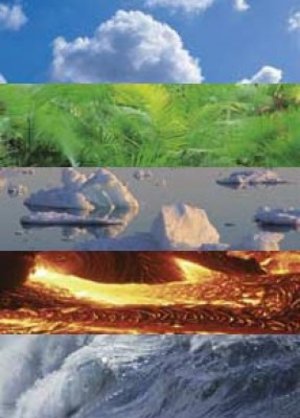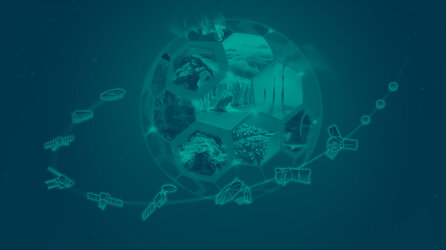Three ESA Earth science missions move to next phase
ESA has announced three candidate Earth Explorer mission concepts to progress to the next phase of consolidation. This selection is part of the user-driven process that will lead to the launch of the Agency's seventh Earth Explorer satellite in the 2016 time frame.
Last week ESA’s Programme Board for Earth Observation decided on three Earth Explorer missions that will undergo Feasibility Studies. The decision was based on recommendations made by ESA's Earth Science Advisory Committee (ESAC) following the Earth Explorer User Consultation Meeting held in Lisbon, Portugal in January. This decision means that the BIOMASS, CoReH2O and PREMIER missions now go through to the next stage of consolidation.

The BIOMASS mission aims to determine, for the first time and in a consistent manner, the distribution and temporal changes of forest biomass at a global scale. Data from the BIOMASS mission will reduce current uncertainties in the calculations of carbon stocks and fluxes associated with the terrestrial biosphere. This is of crucial importance since deforestation is providing a net source of carbon to the atmosphere – a factor affecting climate change. BIOMASS will therefore advance our understanding of the carbon cycle and its role in controlling the climate.
BIOMASS is based on a single satellite carrying a P-band Synthetic Aperture Radar to provide continuous global interferometric and polarimetric radar observations of forested areas.

COld REgions Hydrology High-resolution Observatory (CoReH2O) is the first satellite mission dedicated specifically to measuring fresh water stored in snow on land surfaces and in snow accumulation on glaciers and ice sheets. The amount of water held in snow is an important component of the water cycle – though presently poorly understood. Since climate change is impacting the amount of snow and ice present it also has a critical impact on water resources.
CoReH2O aims to provide high-resolution repeat observations of snow and ice properties for modelling and validating surface to atmosphere exchange processes, climate research, and hydrological applications from regional to global scales. The mission includes a single satellite carrying a dual frequency (X- and Ku-band), dual-polarisation Synthetic Aperture Radar to observe snow and ice at high spatial resolution.

The objective of the Process Exploration through Measurements of Infrared and millimetre-wave Emitted Radiation (PREMIER) mission is to quantify processes controlling global atmospheric composition in the mid- to upper-troposphere and lower stratosphere, which is between 5 and 25 km above the surface of the Earth. The composition and dynamics of the atmosphere at the boundary between the upper troposphere and lower stratosphere has an important impact on chemical exchanges and the Earth's radiative balance. The mission aims to improve chemistry–climate models that are needed to accurately predict future changes in climate on decadal to century time scales.
Through the use of limb imaging spectrometry in the infrared, PREMIER will observe 3D fields of atmospheric composition in the upper troposphere and lower stratosphere. A millimetre-wave limb-sounder will provide data in the presence of cirrus cloud and complementary chemical species.
ESAC's Chairman Johnny Johannessen commented that, "The Reports for Assessment provided and the presentations given at the Earth Explorer User Consultation Meeting were excellent. Although complex, the scientific and technical elements of each mission were put across very clearly. This meant that the background and starting point for ESAC's assessment could not have been better. The consensus we reached, on which missions to recommend, was based particularly on the benefits that the missions could bring to science. Although ESAC recommended these three missions to go to Phase A, we also put forward a strong argument for studies to continue on the other missions."










